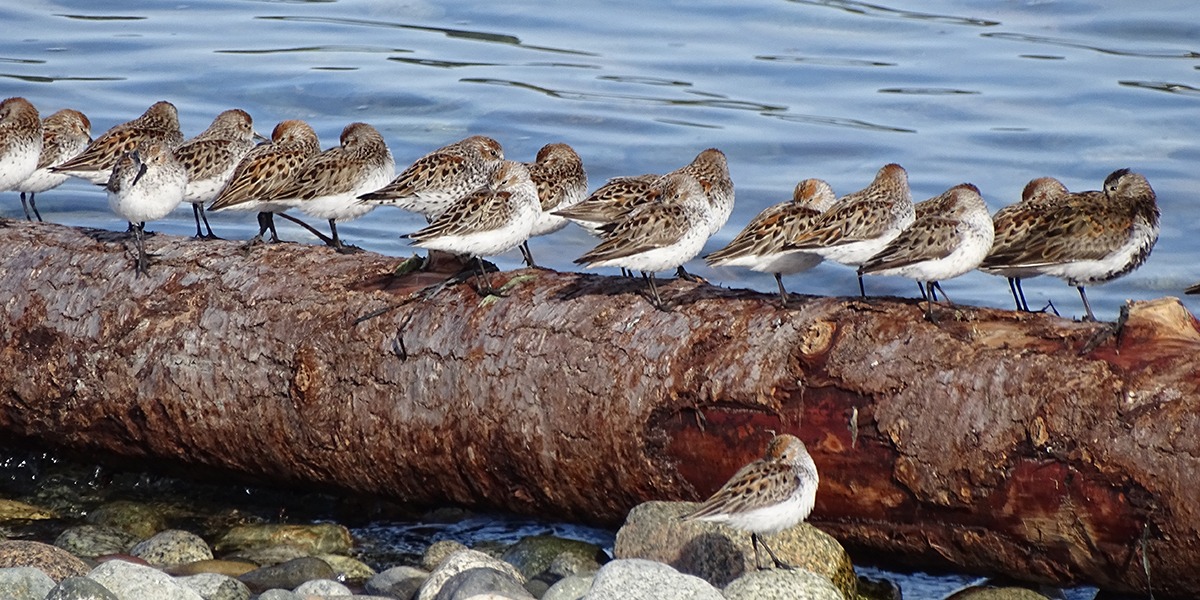By Pete Davidson, Senior Conservation Advisor, Birds Canada
With the weekend’s news of the latest oil spill along the California coast, our first thoughts and concerns are for the marine life, including birds, in this biologically rich coastal-marine region of the Pacific Flyway.
Whilst we await news of species of conservation concern like Snowy Plover and Least Tern, marine mammals, and more, there are some great public resources – many generated by Citizen Science – which can help us find answers to at least some of our own questions.
Shorebirds immediately come to mind as images of oil on sandy beaches hit the headlines. Southern California is at the northern end of the winter range of several Arctic-breeding shorebirds. Using this helpful new tool based on eBird data, it is possible to find out how many shorebirds of different species at this time of year use the Huntington-to-Newport Beach stretch of coast affected by the spill. Take a look at Western Sandpiper. Higher bird use is shown close to where the oil is beaching. But, scanning down the coast, there are much larger areas with equally high concentrations of Western Sandpipers. Fingers crossed, nearly all have migrated through the spill zone already. A closer look at a resource generated by another Citizen Science program in which Birds Canada is a partner, the Migratory Shorebird Project map, shows more specific locations used by shorebirds in that area, which appear to include habitats that may not be affected by the spill. Note this is a mid-winter survey (Dec-Jan), at which time hundreds to low thousands of shorebirds are using the area.

Western Sandpipers Photo: Graham Sorenson
Another species that comes to mind is the Western Grebe. This freshwater breeder used to winter in large numbers in the Salish Sea, but over the last few decades, shifted its distribution to the southern California coast. Great detective work by Scott Wilson and colleagues figured that out, using Citizen Science data from the Christmas Bird Count. The question is, when do these birds arrive on the California coast? This eBird animation shows that they don’t arrive in the affected area until November, by which time the oil in the marine environment should not affect them directly.
Tracking technologies are answering so many questions about migration these days, as Birds Canada is finding out with the Motus Wildlife Tracking System. This is especially true for seabirds, like Cassin’s Auklet, which became a total enigma when they finished breeding and left the land for the open ocean. Cassin’s Auklet is listed as Special Concern under Schedule 1 of Canada’s Species at Risk Act, and Canada hosts most of the world’s breeding population, but, until recently, where they went after breeding was a mystery. Some amazing tracking work by Katie Studholme and colleagues using light-sensitive geolocators showed that birds breeding in Canada use a range of very different migration strategies, one of which sees birds that breed on Haida Gwaii move to the Southern California Bight in winter. Again, like Western Grebe, the question becomes: When do they arrive? Going back to that great piece of work reveals that they arrive off California in November, so, like the Western Grebe, will hopefully not be directly affected by the spill.

Cassin’s Auklet Photo: Yousif Attia
One of the most important baselines from which we can assess the magnitude of impacts of a spill like this also come from Citizen Science: Beached Bird Surveys. In the coming weeks and months, we’ll be looking to our sister programs like COASST and BeachCOMBERS, the beached bird survey networks along the U.S. Pacific coast, for news on what they are finding.
In Canada, Birds Canada coordinates volunteer Beached Bird Surveys in BC and Québec. If you’d like to learn more or get involved, please visit the program page.

